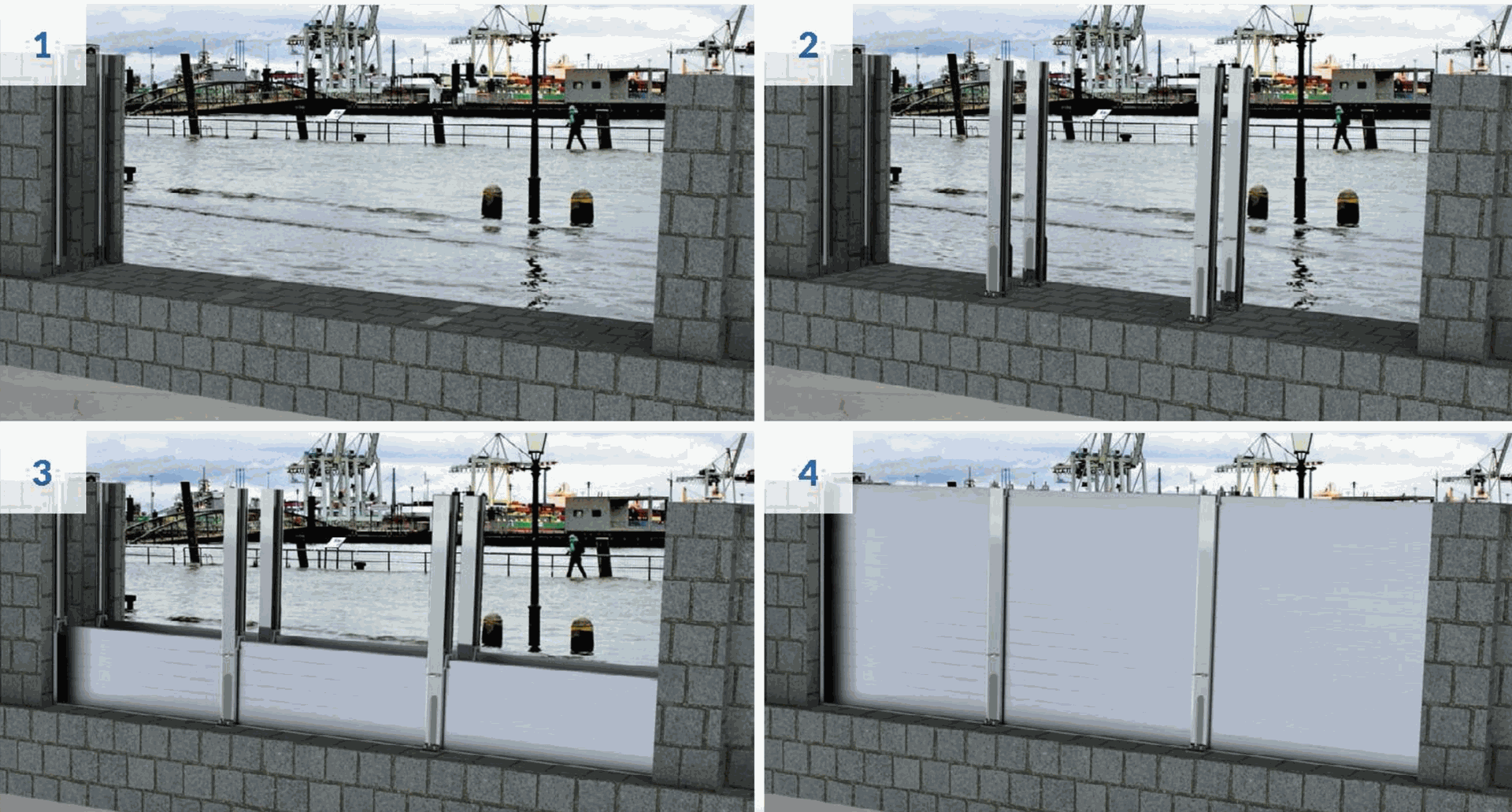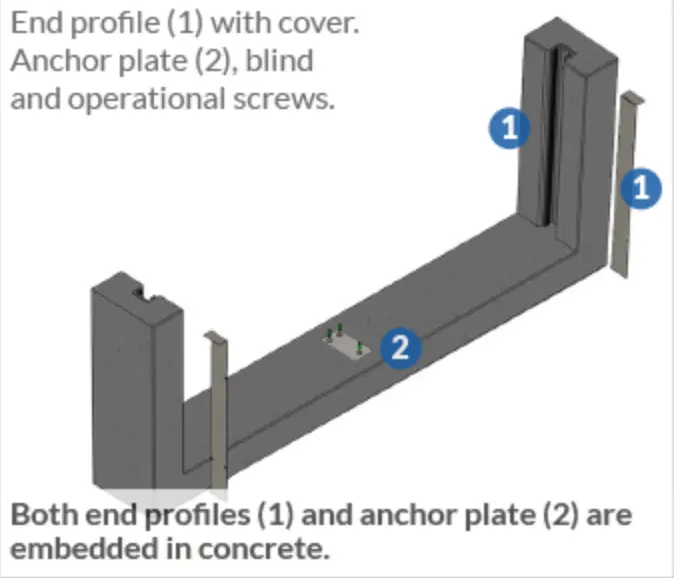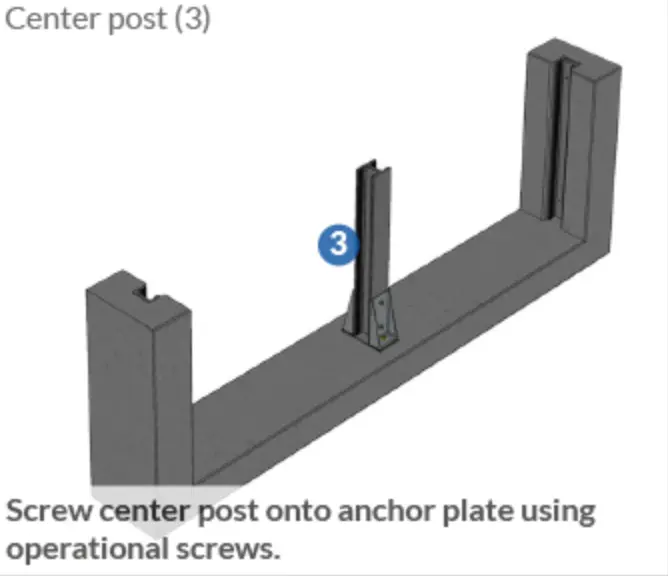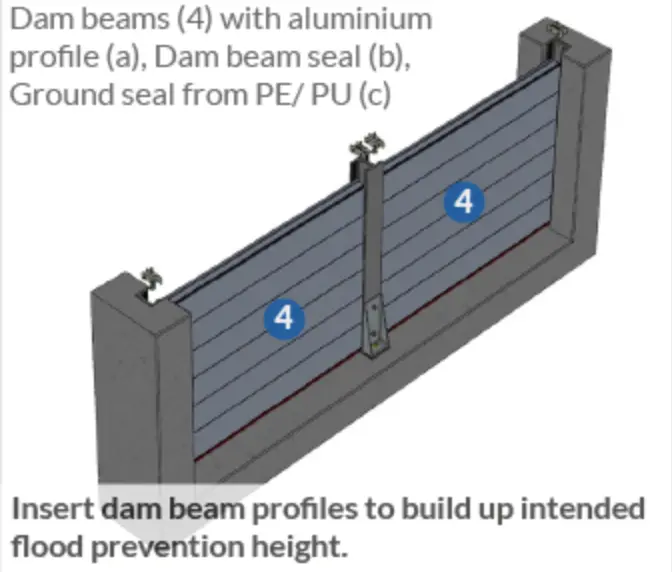Flood prevention
To cater to various on-site scenarios, we provide three lines of floodwall systems. These include the cost-effective P-System-MFW100P, which can be quickly obtained, the durable and tailored E-System-MFW100E, and the high-capacity H-System-MFW100H designed for safeguarding against severe flood levels.
Module of Flood prevention
- P-System-MFW100P
- E-System-MFW100E
- H-System-MF100H


(1) End profile with (2) anchor plate

(3) Center post

(4) Dam beams
MFW100P
- Professional deployment . Easy and unambiguous setup.
- Heights up to 2.1 m. Span up to 4.0 m.
- Short lead time and cost effective protection
- Engineered design according to project requirements.
- Heights over 2.0 m.to 4.0 m. Span up to 3.0 m.
- 5 performance categories.
- Free standing center posts with side reinforcements.
- For areas with extreme stress / flood heights.
- Heights over 4.0 m.to 6.0 m. Span up to 3.0 m.
- Complementary to E system.
- Cantilevered center post with associated anchor plates.
- Center post with back support 6 to 8 bolting points.
What is Flood prevention?
Flood prevention refers to the methods and strategies implemented to reduce the risk of flooding and minimize its impact on communities and the environment.
These measures can include structural interventions such as building dams, levees, and flood barriers, as well as non-structural approaches like land-use planning, flood forecasting, early warning systems, and community preparedness initiatives.
The goal of flood prevention is to mitigate the potential damage caused by flooding and protect lives, property, and natural resources.
Application
Common applications of flood prevention include:
- Floodplain zoning
- Construction of levees and floodwalls
- Stormwater management
- Wetland restoration
Benefits
Flood prevention offers numerous benefits, including:
- Protection of Lives
- Property Protection
- Preservation of Ecosystems
- Economic Stability
- Health Benefits
- Community Resilience